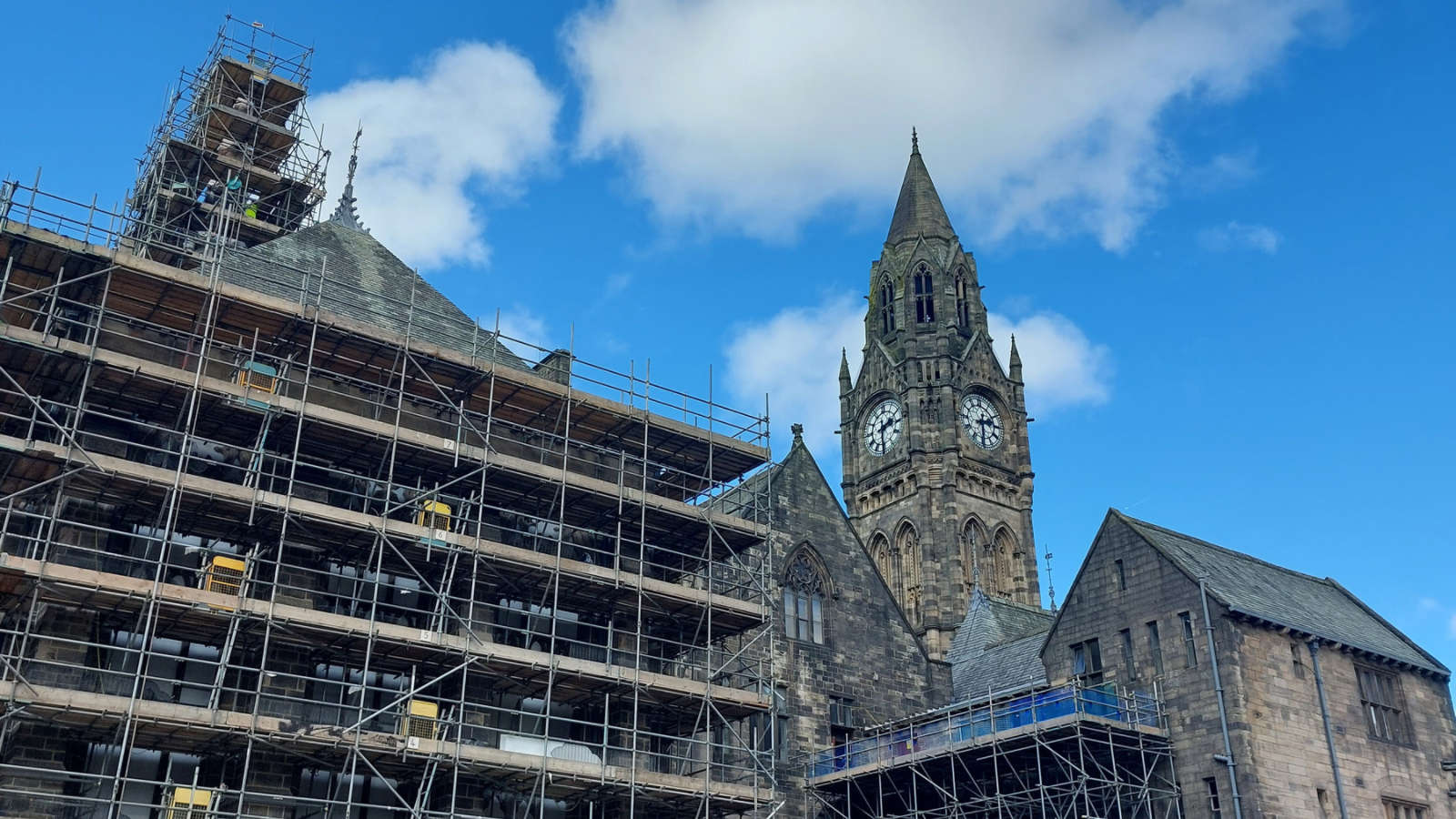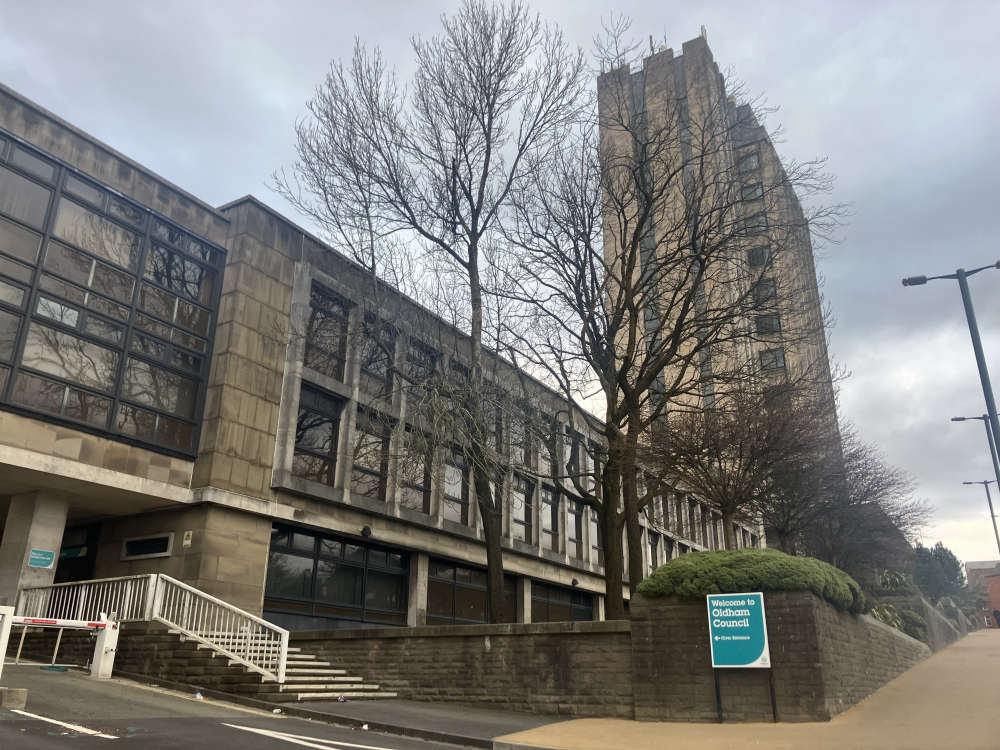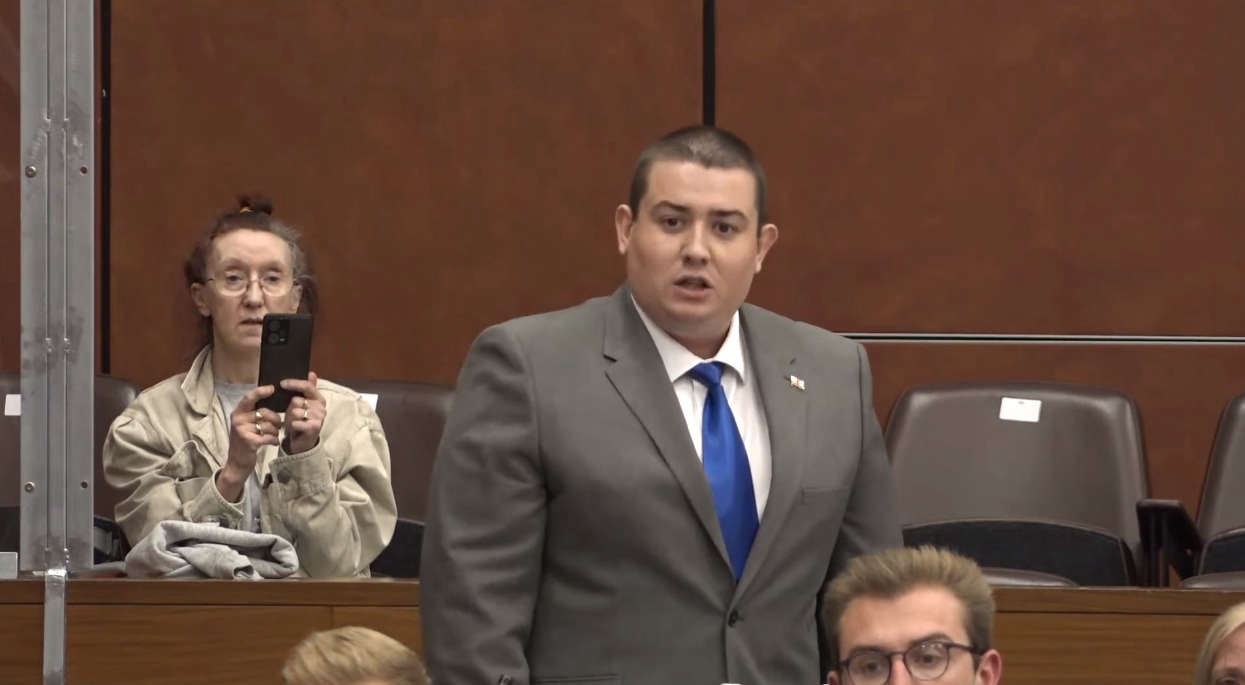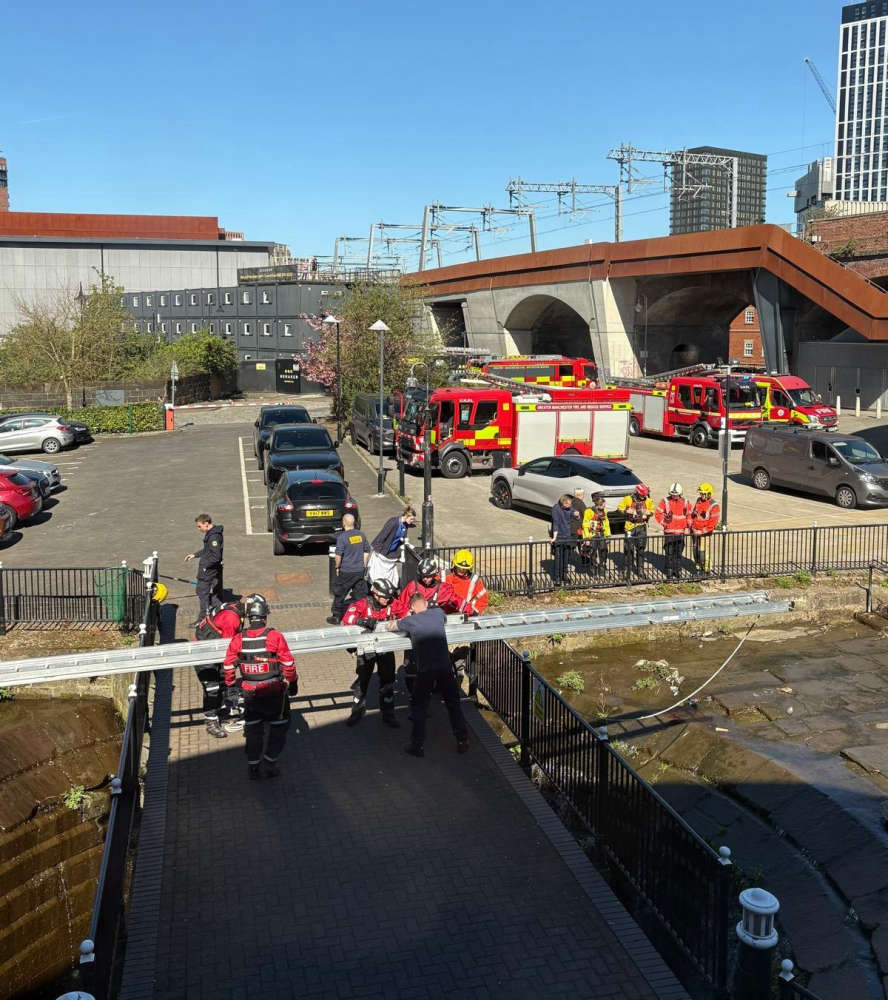
The restoration of one of the North West’s finest historic buildings has been unveiled, with Rochdale Town Hall set to reopen to the public in a matter of weeks.
The project, which was supported by The National Lottery Heritage Fund with an £8.9m grant, has transformed the iconic Grade I Listed building, which has stood proud in Rochdale town centre since 1871. The scheme, which has restored many of the building’s historic features and created brand new community spaces in rooms which were previously out of bounds to the public, began in 2020 when the town hall closed its doors to allow experts to get to work. Now, with just weeks to go until the building will reopen to the public on Sunday 3 March, images of the spectacular spaces can be revealed for the first time. Some of the most dramatic changes have taken place in the Great Hall, where specialists used a variety of equipment, including cotton wool buds, to painstakingly restore the 350 panels which cover the room’s ceiling. Years of grime made the tiles appear dark brown, and the intricate images on each panel, including the English lions and Scottish thistle, were impossible to see. Now, hundreds of beautiful designs in red and gold can be viewed for the first time in decades. In the Exchange, at the main entrance to the building, Minton floor tiles, which depict a hanging fleece and other insignia of Rochdale, have been repaired. The elaborate vaulted ceiling and sweeping staircase in granite and marble, have been cleaned and restored. Stained glass windows, painted surfaces and wood panelling and furniture throughout the building have also been brought back to their former glory. One of the standout features of the restored town hall is the creation of brand-new community spaces in areas of the building which were previously completely closed from public view. On the first floor, a room which was previously used as office space has had years of unsympathetic additions, including partition walls and a mezzanine floor, removed to reveal a double height ceiling, angels along the walls and a previously hidden window with views directly down into the Great Hall. This room, named the ‘Bright Hall’ after the late Rochdale born MP and social reformer, John Bright, will be used by community groups and for events. On the ground floor, a room which was previously used for council meetings has been transformed into a permanent exhibition space, known as the Welcome Gallery, which tells the story of Rochdale, its people and its past, through objects, interactives and imagery. Leader of Rochdale Borough Council, Councillor Neil Emmott, said: “Rochdale Town Hall is probably one of the finest examples of neo gothic architecture in the country, but like many buildings this old, it was showing its age. Now, after four years of painstaking work, it looks incredible, just as it would have done when it first opened its doors well over a century ago. Like so many of our residents, I know this building really well and I’m blown away by the quality of the work and how good everything looks. I’m honoured to have seen it today and I’m delighted that our residents and visitors will be able to enjoy this space in just a few short weeks.” In addition to experts, over 500 volunteers got on board with the project, with Rochdale residents from the ages of 15 to 82, supporting with everything from historical research to cleaning and conservation. Eilish McGuinness, Chief Executive of The National Lottery Heritage Fund said: “As the UK’s largest funder of heritage, we believe in the power of historic buildings, like Rochdale Town Hall, to ignite the imagination, offer joy and inspiration, and to build pride in place. “The town hall has been part of Rochdale’s story for over 150 years, and is already a treasured building, so I am delighted that National Lottery funding has helped restore and protect its spectacular heritage, made the building fully accessible for the first time, and created new community spaces, ensuring that Rochdale Town Hall, continues to be valued, cared for and sustained for everyone, now and in the future. Congratulations to all involved in making this project a success.” Councillor Janet Emsley, cabinet member for Equity, Safety and Reform at Rochdale Borough Council, said: “Rochdale Town Hall’s transformation is about so much more than how it looks, as impressive as that is. It’s about opening it up and making it more relevant to the public than ever before, with guided tours, increased opening hours and new exhibition and community spaces, so everybody knows this place is for them. It’s so much than a piece of our history, thanks to the support of National Lottery players, it’s now an important part of our future as well. “The sheer number of people who have given their time to help make this restoration project a success shows how beloved this place is to the people of our borough and I cannot thank our volunteers enough for their incredible efforts.” Alison Iveson, from Norden, is one of the many locals who pitched in to help bring the town hall back to life. She said: “I remember first visiting the town hall in the 1980s and my jaw dropped to the floor. It’s an incredible building and we’re so lucky to have it here in Rochdale. I have a little connection to it too, as my husband’s family owned the Ivesons shop, which was just around the corner from the town hall and was known as Rochdale’s first department store when it opened in 1901. Ivesons supplied and fitted carpets in the council chamber in 1951 and I’ve donated some photos of this to the new Welcome Gallery exhibition space. “I’ve had so many opportunities as a volunteer on this project. I’ve researched the building’s history and found out about all the Suffragette meetings which were held here and the old fire station which was round the back of the building and which had to respond to the clock tower fire in 1883. People will be able to find out about all these stories in the Welcome Gallery. I got involved in the archaeological dig in Town Hall Square, where I got a qualification in archaeology, and I even helped to clean some of the delicate historic pieces.” In addition to the aesthetic changes, crucial additions, including more lifts and entrances, will make the building fully accessible for the first time, so everyone can enjoy the space. Other major changes, such as the repair of the roof and the installation of new, more efficient heating systems, will also help future proof the building, so it can continue to be enjoyed for decades to come. A brand new restaurant, the Martlet, is also expected to open in the town hall in the spring, in the space which was formerly occupied by the Clock Tower dining room. Outside, a multi-million pound revamp of Town Hall Square has accompanied the work inside, with new seating, decorative paving and landscaped areas framing the building and creating a new events space in the town centre. The restoration of Rochdale Town Hall was delivered by Rochdale Development Agency on behalf of the council, with HH Smith acting as main contractors. Restoration work will continue in 2024 with work to restore the west wing of the building, which includes the council chamber and public gallery. The town hall will open to the public on Sunday 3 March 2024. For more information on the town hall, including booking weddings and events, go to: rochdaletownhall.co.uk Rochdale Town Hall A brief history • Rochdale formed as a new borough in 1856 and the corporation wanted a fitting new civic building to mark it • A competition was held to find an architect and William H Crossland from Huddersfield was chosen (his only other major project was the gothic revival Founder’s Building at Royal Holloway College) • The building opened on the 27th September 1871 • A catastrophic fire destroyed the original clock tower on the 10 April 1883 • The new clock tower is by Alfred Waterhouse (who is famous for Manchester Town Hall and the Natural History Museum). It was completed in 1887 and is 190 feet tall (57m) • The organ in the Great Hall was only installed in 1913. The opening recital was given in the presence of George V and Queen Mary on Wednesday 9th July 1913 • Its Grade I listing places it the top 2.5 per cent of buildings nationally • The Exchange was designed as a place for traders to meet and do business but was never used for this purpose • You can see all the Kings & Queens of England and the Magna Carta in the Great Hall • The stained glass in the main stair depicts the places where Rochdale traded around the globe • The building once housed the police station, the magistrates court, the fire station and library


 Detective Sergeant Dismissed and Banned from Policing following Sexual Assault Conviction
Detective Sergeant Dismissed and Banned from Policing following Sexual Assault Conviction
 Each candidate hoping to win the Balderstone and Kirkholt by-election
Each candidate hoping to win the Balderstone and Kirkholt by-election
 GMP and partners made more than 130 visits to business premises as part of a national intensification crackdown in March
GMP and partners made more than 130 visits to business premises as part of a national intensification crackdown in March
 Seven arrested and crossbow recovered following disturbance in Salford
Seven arrested and crossbow recovered following disturbance in Salford
 Oldham will have to bid for funding for inquiry into child grooming
Oldham will have to bid for funding for inquiry into child grooming
 Oldham to vote on axing 20 councillors from borough
Oldham to vote on axing 20 councillors from borough
 Oldham pub has licence suspended following brawl and stabbings
Oldham pub has licence suspended following brawl and stabbings
 ’20 firefighters’ try to rescue single goose
’20 firefighters’ try to rescue single goose


